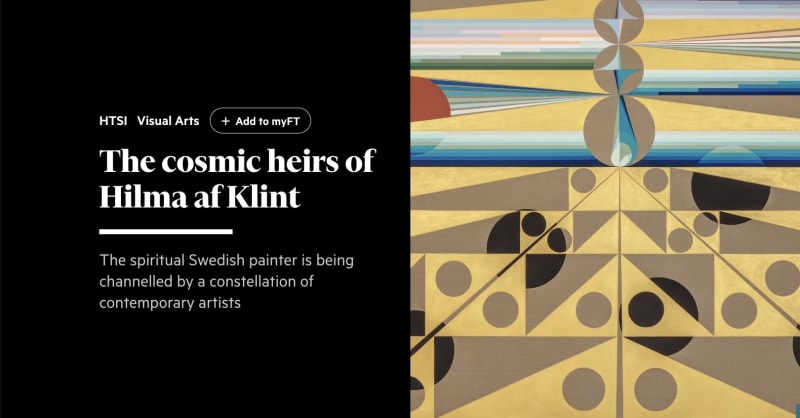In 1906, the Swedish artist and mystic Hilma af Klint was “contacted” about a large and ambitious project. Af Klint was part of a small occult group that conducted seances and communed with spiritual beings, and The Paintings for the Temple was “assigned” by one of the artist’s spirit guides. By the time of its completion in 1915, it totalled 193 works. “The pictures were painted directly through me, without any preliminary drawings, and with great force,” said af Klint of one series. Colourful, geometric and symbolistic, her other-worldy abstract compositions were wildly radical.
Once the project was finished, af Klint continued painting, but her work from 1917 until her death in 1944 was no longer guided by spirits. In 1932, she decreed that many of her paintings and drawings should be kept secret for 20 years after her death. Even then, the art world was slow to appreciate her oeuvre. In 1970, a leading modern art museum in Sweden turned down the af Klint estate. Only in the 21st century did her work begin to resonate.
Following a profile-raising exhibition in Sweden in 2013, New York’s Guggenheim opened an af Klint retrospective in 2018, and the furore around the mysterious artist and her radical, spiritual paintings reached fever pitch. The reason? “She upended everything that we thought about the history of abstraction,” says Tate Modern international-art curator Nabila Abdel Nabi.
Today, the fascination around af Klint continues to grow, fuelled by a flurry of new books and the current blockbuster exhibition at Tate Modern until 3 September. Meanwhile, the influence of her lyrical abstraction, and the tale of mysticism and mediumship behind it, is palpable among a constellation of artists working today.
“I’m particularly drawn to the way she was able to integrate figuration, abstraction and diagrammatic organisation on the same canvas,” says Los Angeles-based artist Molly Greene, whose surreal configurations are meticulously painted and exude a pastel-hued, crystal-tinted glow. “Af Klint solidified my comfort with making symmetrical images,” adds New York-based Loie Hollowell, whose pulsating abstracts are hotly sought-after (auction prices are upwards of $1mn). “I also really like the relationship of her work to the body, the way the large works encompass you and bring you in.” Hollowell’s body-based works are also autobiographical. “During my first pregnancy, I started making paintings with big semi-circles; I’d compose them in geometric layouts, thinking about the breasts, belly, head and butt,” she says. The painted surface is also built upon in foam, creating a 3D element that she recently pushed further, “bringing the actual physical cast of the pregnant belly into the work”.
Hollowell doesn’t refer to herself or her work as “spiritual”. Nor does fellow New-Yorker Angela Heisch, whose dynamic abstract work was recently exhibited at Pippy Houldsworth Gallery in London (the show sold out before opening, with half of the works going to institutions). The New Zealand-born painter does, however, mention “vibrational force” as a common theme in these latest works, which draw the viewer into central spherical forms, reminiscent of pearls or planets. She also admits an interest in “that unknown component that ties us all together – in trying to get across feelings and emotions”.
In her book The Other Side: A Journey into Women, Art and the Spirit World, Jennifer Higgie writes that “the very air throbbed with unseen energies” for af Klint. “The question was how to interpret them? How to give them shape?” For artists today, the nature of these “energies” is interpreted in different ways. “I feel like I’m channelling something,” says Kazakhstan-born artist Aigana Gali, whose recent show at Kristin Hjellegjerde’s London gallery featured light-filled canvases of mystical, organic symbols and spectrums that she says began with dreams: “I would become a colour. I have no explanation why. But in the beginning I would dream myself as the colour orange.”
Article continues...

